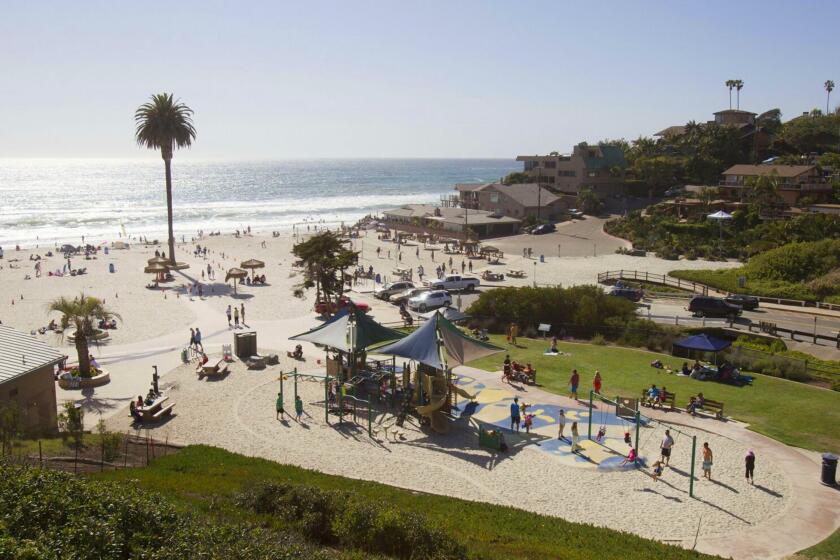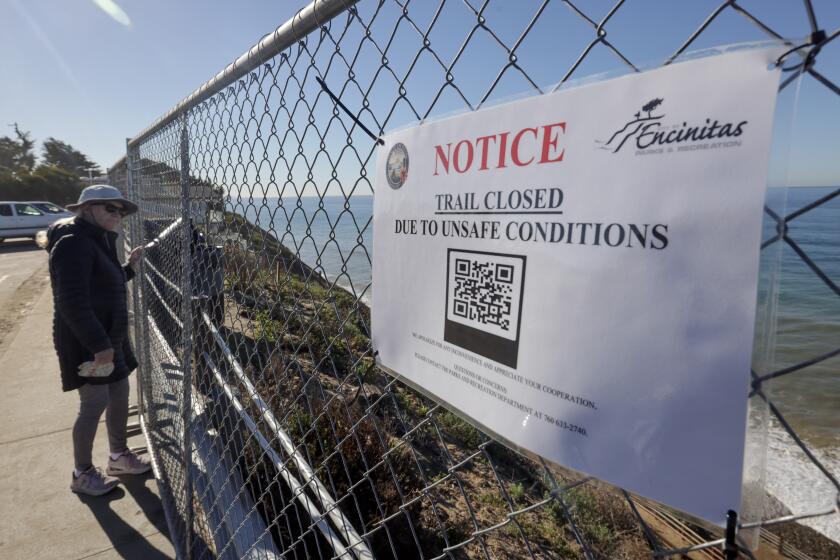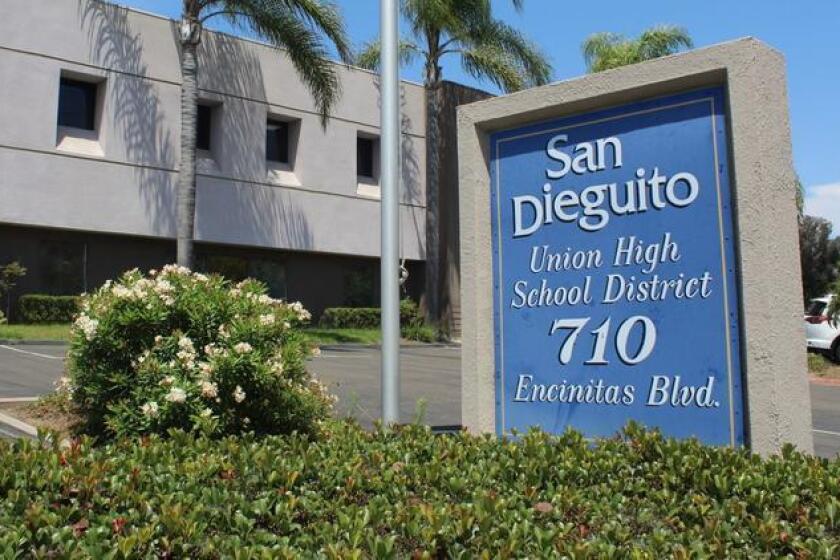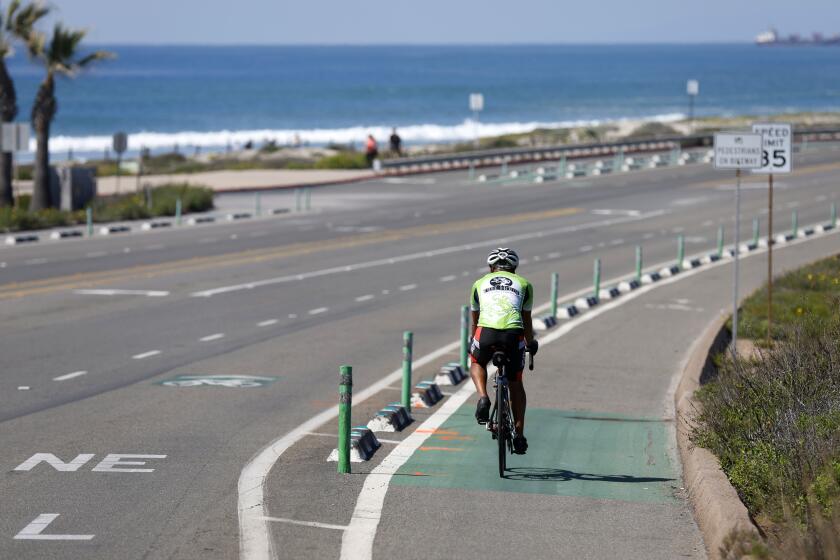Encinitas backs Piraeus Point townhome project, with conditions
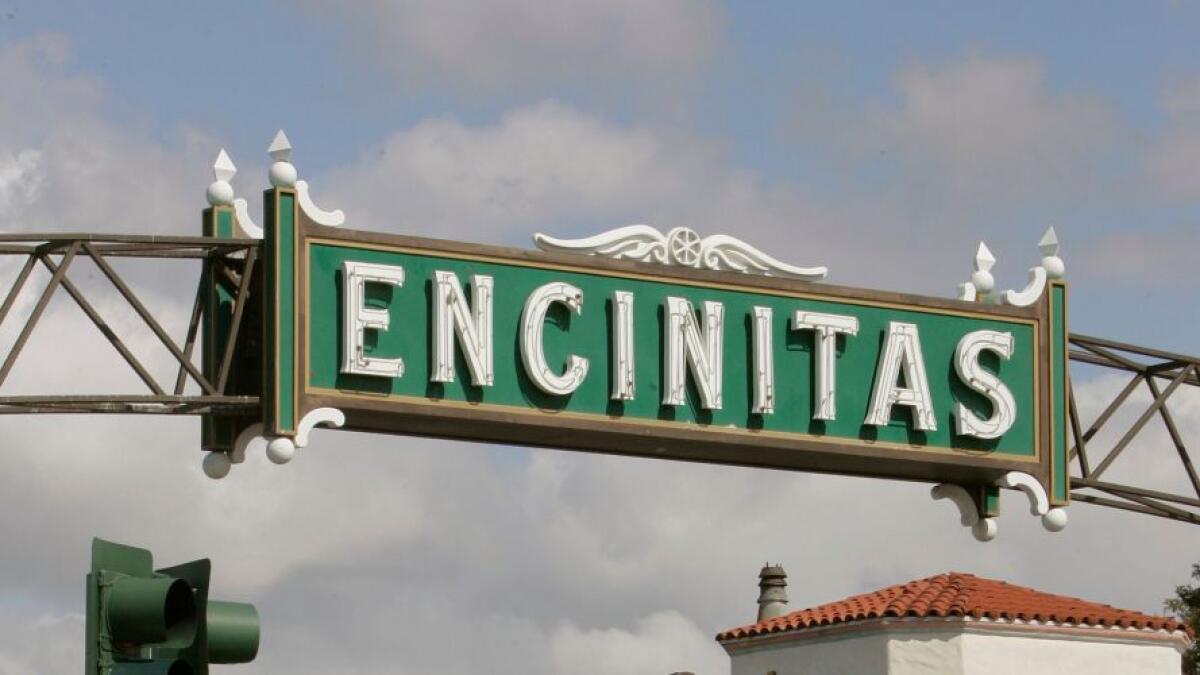
If the city is going to give away land rights to make a 149-townhome project possible, then it ought to get pathways to a park and a school in return, Encinitas planning commissioners said.
“It feels like there’s a deal to be made here,” Chairman Kevin Doyle said May 18 as he suggested asking for money to pay for decomposed granite pathways to Capri Elementary and Olympus Park.
Commissioners voted 3-1, with Commissioner Susan Sherod opposed and Commissioner Robert Prendergast recusing himself due to conflict of interest, to approve the developer’s requests for coastal development and design review permits. The developer’s request for the city to give up its roadway easement rights to a 1-acre portion of the site will require City Council approval at a later point.
Doyle said compensation for the developer’s street vacation request was one of the few areas of the Piraeus Point project where the city has some flexibility and it ought to take full advantage of that. Many other elements of the “tolerable” project can’t be changed, he said, because it’s going on a site the city previously designated for high-density housing and it’s seeking special development rights under the state’s density bonus housing law.
Proposed to go on a vacant hillside at the northeast corner of Piraeus Street and Plato Place, the Piraeus Point townhome project is being put forward by Lennar Homes of California. Plans call for 15 three-story residential buildings with garages.
Developer representative David Shepherd said the company could have built 311 housing units on the site, if it had set aside 15 percent of them as low-income units. Instead, it went with the much-lower figure of 149 units, with 10 percent set aside as low-income units.
The development plans have been hugely controversial with neighboring homeowners who have said they have concerns about traffic, the extensive soil removal plans for the site, the large walls that will be built against the hillside, and the developer’s request to be exempt from undergrounding the utility lines.
Planning commissioners initially held a public hearing on the proposed development May 4, but that hearing went late into the night and discussion was continued to the May 18 meeting. During the May 4 meeting, 14 people spoke in opposition. Commissioners limited testimony at the May 18 meeting to new speakers only, but still heard from 10 more opponents.
Sherod, the commissioner who voted against issuing the permits, said she saw some positives about the project, including its use of solar power and plans for electric vehicle charging equipment in each garage. However, she said, “the negatives outweigh it, unfortunately.”
She said she thought the developer ought to be required to pay for undergrounding the power lines. She also said she had concerns about the proposed walls, the stability of the hillside and vehicle traffic issues.
Commissioner Steve Dalton said there were several things that he didn’t like about the design of the project, but said he agreed with Doyle that “the street vacation is the one area we have some latitude.”
The commission ultimately voted to recommend that the council ask for “fair market value” for the street vacation. The money, they said, should be set aside to pay for a pathway up Plato Place to access Capri Elementary and a pathway that would make it safer for families to get to Olympus Park.
Get North County news in your inbox
Top stories from the San Diego North County every Monday, Wednesday, and Friday.
You may occasionally receive promotional content from the San Diego Union-Tribune.


